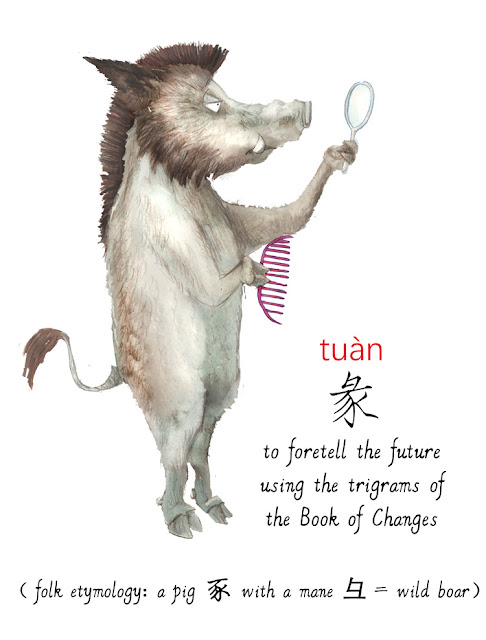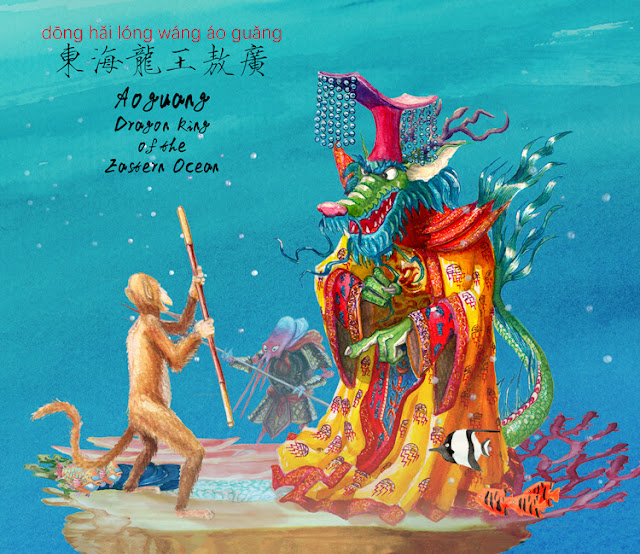彖 tuàn
Characters
彖 tuàn
Made up of the pig radical (豕 shǐ) and the pig’s head component (彑 jì, also written 彐*)
彖 originally meant pig, and is just a variation on the oracle bone script of 豕 shǐ.
There is a lovely folk etymology that says this was character meant ‘wild boar’, and the 彑 on top is the wild boar’s crest of hair, distinguishing it from the domesticated pig. Unfortunately there is no textual evidence for this (there’s no reliable source for the oracle bone script below), and if it does come from a pictogram it’s the image of an animal on a leash (from the bronze script).
Either way, 彖 now has nothing to do with pigs or wild boars, and in modern Chinese is only used to mean:
彖辭(辞) tuàn cí to foretell the future using the trigrams of the Book of Changes (易經)
* Which is why when they simplified ‘green’ they changed it from 綠 lǜ to 绿.




Comments
Post a Comment